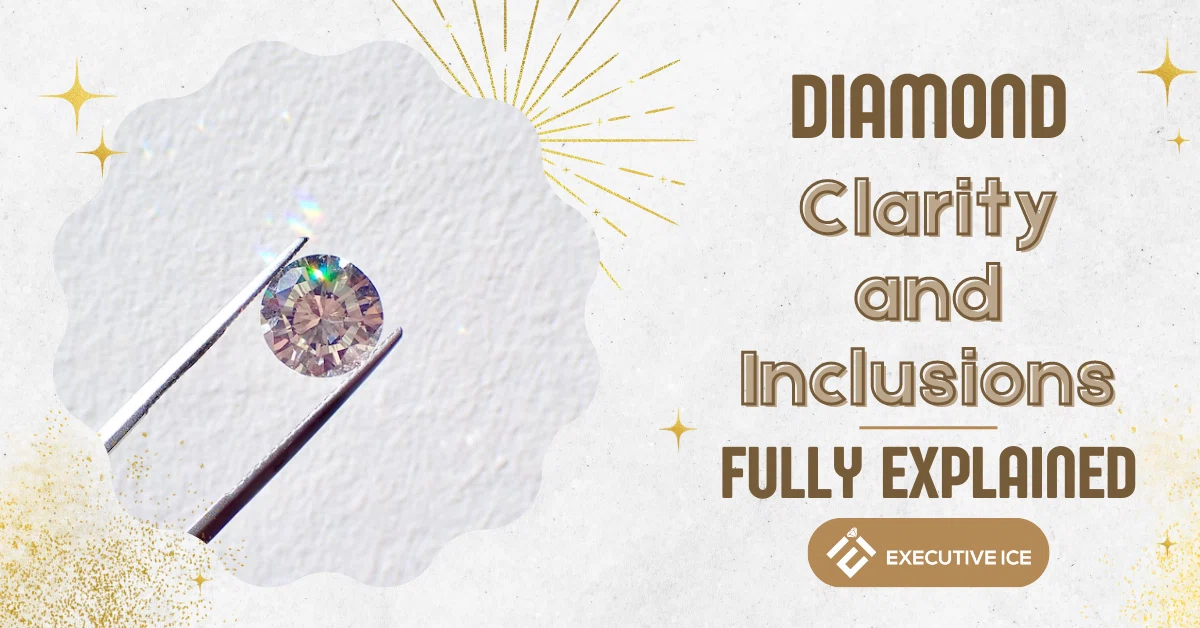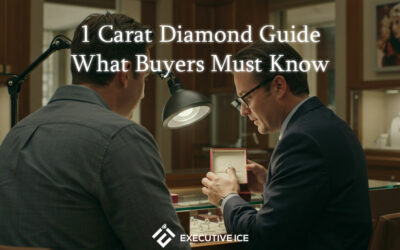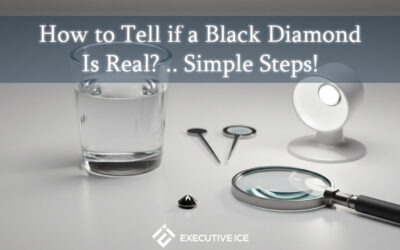Of the multitude of diamond characteristics, the 4Cs – cut, color, clarity, and carat – are paramount. Among these four, it is essential to acquire a solid understanding of diamond clarity.
Diamond clarity pertains to the lack of inherent birthmarks, prevalent in nearly all diamonds. These birthmarks can either be internal, known as inclusions, or surface irregularities, referred to as blemishes. Diamonds devoid of inclusions or blemishes are designated as flawless on the grading scale. However, these are rare, comprising only 0.5-1% of all diamonds, which consequently impacts their value.
The clarity of a diamond, apparent to the naked eye, influences its brilliance. Consequently, clarity is often deemed more significant than the diamond’s color.
What are Diamond Inclusions and Blemishes?
The term “Diamond Inclusions” is a sophisticated expression that denotes visible flaws present in various types of diamonds. Some of these flaws are internal, while others appear on the surface. Furthermore, different types of inclusions are categorized based on their formation process.
When a diamond contains inclusions (a phenomenon that occurs in over 99% of diamonds), it alters the way light interacts with the stone. In the absence of inclusions, light can traverse through the diamond unhindered, without encountering any ‘obstacles’.
The nature, size, and location of the inclusion determine the extent of ‘blockage’ to the light traversing through the diamond. We will delve deeper into this aspect shortly.
What Causes Diamond Inclusions?
The formation process of a diamond can lead to the creation of inclusions. As the diamond crystal grows, small crystals or foreign materials can become trapped within it.
Structural irregularities can also develop in the diamond’s atomic lattice. These trapped crystals or irregularities may remain even after the diamond has been cut and polished, potentially impacting the diamond’s appearance and even its durability.
Diamond Inclusion vs. Blemishes
Diamond inclusions refer to crystals or, less commonly, foreign materials that are formed or trapped within the diamond itself. Since these inclusions are situated deeper inside the diamond, they are typically less visible.
On the other hand, blemishes are flaws that appear on the diamond’s surface and do not extend into its internal structure. A simple surface scratch, for example, would be categorized as a blemish, not an inclusion, as it doesn’t extend beyond the surface of the stone.
It’s important to note that blemishes often have a greater impact on diamond grading, appearance, and even price than internal imperfections (inclusions).
However, it’s worth mentioning that this classification isn’t universally standardized across the internet or even in stores. Often, both types of imperfections are simply referred to as “inclusions,” a term used to encompass both internal and external flaws.
Inclusion Types
Inclusions and blemishes can manifest in a variety of ways within a diamond, and their impact on a diamond’s brilliance and durability largely depends on their size, type, color, and location. Here are some common types of inclusions:
1. Laser drill hole
Diamond cutters often use lasers to drill into a diamond and remove conspicuous black inclusions. These laser drill holes are typically microscopic and not visible to the naked eye.
However, they can affect the value of the diamond. On a diamond plot, this inclusion is represented as a red dot with a green circle around it.
2. Crystal
Crystals, also known as “baby diamonds,” resemble small mineral deposits within a larger diamond. They can occur in different colors, including black, white, and occasionally green or red.
Crystals are denoted as small red circles on a diamond clarity plot. Diamonds with white crystals are preferable, as they are harder to see with the naked eye, while diamonds with darker crystals should generally be avoided.
3. Needle, pinpoint and cloud
These are variations of crystal inclusions. A needle is a long, thin crystal, usually white or translucent, that is created due to pressure during diamond formation. These appear as diagonal lines on the clarity plot.
Pinpoints, the most common type of crystal inclusions, look like tiny white dots and are usually only visible under extreme magnification. They are represented as tiny red dots on a plot. Some pinpoints can be grey or black.
A cloud is a group of three or more pinpoints and is represented as a broken circle on the clarity plot. They appear white and hazy. While small clouds don’t have a significant impact, larger ones can affect light performance.
4. Twinning wisp
This type of inclusion occurs when the crystal plane within the diamond twists, usually due to defects in the diamond’s crystal structure. This can happen if the formation of the diamond is interrupted and then resumes, causing twinning wisps to appear within the stone.
On a diamond clarity plot, this inclusion resembles a twisting line with perpendicular lines through it. These inclusions are most common in fancy-shaped diamonds (shapes other than round).
5. Knots
Knots are inclusions that extend to the finished surface of the diamond and are often visible to the naked eye.
These inclusions may appear as raised areas on the diamond’s surface and can negatively affect the diamond’s durability. On a diamond grading report, knots are represented as a red oval surrounded by a green oval.
6. Feathers
Feathers are inclusions that resemble the appearance of a bird’s feather. Generally transparent, feathers are essentially tiny cracks within the diamond.
Although small, they can impact the durability of the diamond. Feathers are depicted as squiggly lines on a diamond grading report.
7. Chips
Chips refer to small openings on the diamond’s surface, often found near the edges. These can be caused by a variety of factors and are typically visible to the naked eye.
While chips can be addressed through re-cutting or polishing the diamond, a substantial chip may lead to a reduction in the diamond’s overall size (carat). On a grading chart, chips are represented by a “^” symbol.
8. Cavity
Much like dental cavities, diamond cavities are pockets on the diamond’s surface that trap dust, dirt, or oils. They are typically small and require magnification to be seen, and are usually formed when an internal inclusion is dislodged during polishing.
Cavities are depicted on grading charts as ovals with lines through their centers.
9. Bruise
Bruises often appear on the crown of a diamond but can also occur elsewhere.
Typically caused by a forceful impact to the diamond’s surface or excessive force during polishing, bruises can extend into the interior of a diamond, qualifying them as inclusions rather than blemishes. Bruises are marked as an “x” on grading reports.
10. Etch channels
Etch channels resemble hollow tunnels or worm-like channels within a diamond. They form during the diamond’s creation as it’s pushed from the earth’s inner mantle to the surface crust, enduring the intense heat of the earth’s crust and inner core.
These inclusions can trap particles, making cleaning difficult.
11. Natural & indented Natural
The last two types of inclusions are natural and indented natural. Often mistaken for chips, these inclusions are intentionally left on the diamond by cutters, typically on the girdle edges of stones.
Indented naturals not only appear on the surface, but also slightly extend into the structure of the stone. These inclusions are generally not a cause for concern.
The GIA Diamond Clarity Scale
The GIA Diamond Clarity Scale, created by the Gemological Institute of America (GIA), evaluates the flawlessness of a diamond through a range of 11 grades. The scale uses designations from Included (I) to Flawless (F), with diamond grading often being conducted under 10x or 20x magnification.
Most diamonds fall into the Very Slightly Included (VS) or Slightly Included (SI) categories. Flawless diamonds are so rare that one could spend a lifetime in the diamond jewelry business without ever encountering one.

Here’s a brief description of each grade on the GIA Diamond Clarity Scale:
- Flawless (FL): These diamonds show no inclusions or blemishes when examined by a skilled grader under 10x magnification.
- Internally Flawless (IF): Diamonds in this category have no inclusions, but minor blemishes are visible under 10x magnification.
- Very, Very Slightly Included (VVS1 and VVS2): In these diamonds, inclusions are minuscule and challenging to identify, even for a skilled grader using 10x magnification.
- Very Slightly Included (VS1 and VS2): In these diamonds, inclusions are minor and can be difficult for a skilled grader to identify under 10x magnification.
- Slightly Included (SI1 and SI2): In diamonds of this grade, inclusions are noticeable to a skilled grader under 10x magnification.
- Included (I1, I2, and I3): For these diamonds, inclusions are evident under 10x magnification and may impact the diamond’s transparency and brilliance.
Many inclusions and blemishes are too small to be seen by the naked eye. Even to the untrained observer, diamonds graded VS1 and SI2 might look identical, but these diamonds significantly differ in quality.
Hence, diamond professionals use tools like loupes for precise and accurate assessment of diamond clarity, which is a critical factor when purchasing diamonds.
How Clarity Grades Look in Real Life
In reality, the grades on the GIA Diamond Clarity Scale correlate to specific visible characteristics of diamonds. Here’s how each grade might appear in real life:
Flawless & Internally-Flawless (Grades FL – IF)
As the name suggests, Flawless diamonds show no inclusions or blemishes. Internally Flawless diamonds may have minor surface blemishes that are only visible under magnification greater than 10x. These are the most expensive diamonds you can find due to their near-perfect clarity.
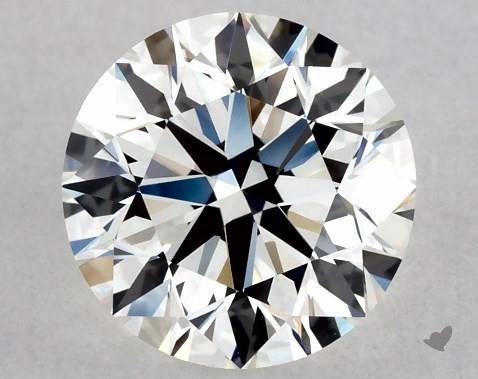
Very Very Slightly Included (Grades VVS1 & VVS2)
These diamonds have very minute inclusions that only trained gemologists can find under 10x magnification. The primary difference between VVS1 and VVS2 diamonds is the location of the inclusions: VVS1 inclusions are visible from the bottom, while VVS2 inclusions are visible from the top, but only under 10x magnification and they are hard to spot even for a skilled grader.
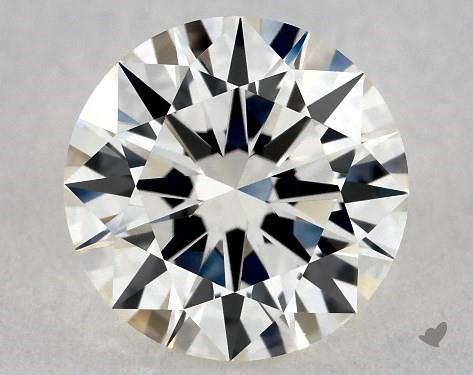
Very Slightly Included (Grade VS1)
VS1 diamonds are often the best choice for most buyers as they offer a balance between price and beauty. These diamonds are “eye-clean,” meaning you cannot see any inclusions with the naked eye.

Very Slightly Included (Grade VS2)
VS2 diamonds are similar to VS1 diamonds in clarity, but the inclusions in VS2 diamonds are easier to identify under magnification less than 10x. However, these inclusions are still typically invisible to the naked eye.
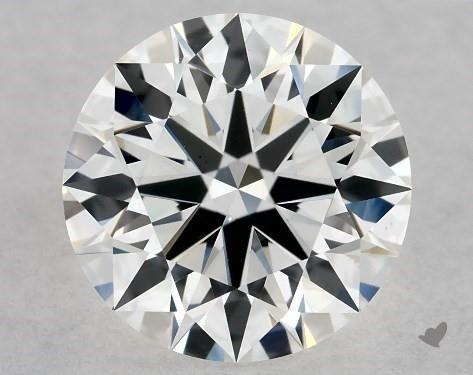
Slightly Included (Grade S1)
Diamonds in this grade have noticeable inclusions that may or may not be visible to the naked eye.
You might be surprised, but as a rule of thumb, always start your search with SI1 clarity, SI1 grade is eye-clean in probably all diamonds under 1-1.2 carat you will encounter!
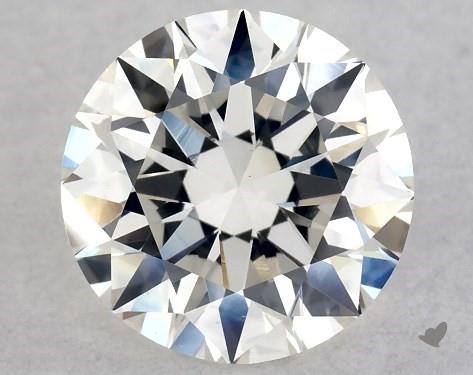
Slightly Included (Grade S2)
SI2 diamonds have inclusions that are sometimes visible to the naked eye, meaning these diamonds may not be “eye-clean.”
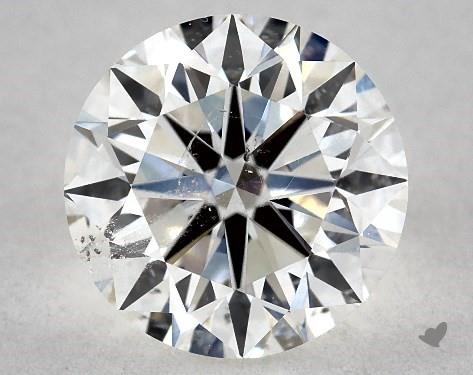
Included (Grade I1)
Diamonds graded as I1 have noticeable inclusions that are usually visible to the naked eye and may affect the diamond’s brilliance. While some I1 diamonds may be “eye-clean,” those classified as I2 or I3 will definitely have visible inclusions.
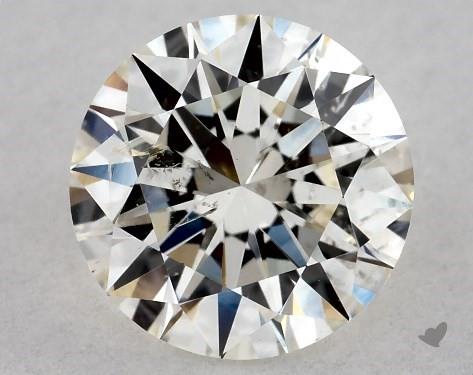
Keep in mind, these descriptions pertain to viewing the diamonds with magnification and by skilled expert. When viewing a diamond with naked eye, most of what’s stated above will not be visible.
What Inclusions You Should Always Avoid When Buying Diamonds
Some inclusions can indeed add unique characteristics to a diamond. However, when purchasing a diamond, you may want to avoid noticeable inclusions that disrupt the brilliance of the stone. These can include long cracks, prominent crystals, particularly those that are dark or black, and knots.
Contrary to what one might think, purchasing diamonds online can be a very reliable option. Many top-notch jewelers provide high-definition images of the exact diamond you’re considering. Online retailers like James Allen even offer magnification of up to 40x, which allows you to inspect potential inclusions thoroughly from the comfort of your own home.
Regardless of whether you’re shopping online or in a local store, always take the time to examine the diamond certificate.
For diamonds larger than 1 carat, the Gemological Institute of America (GIA) includes a clarity section that details all inclusions and blemishes.
Choosing the Right Diamond Clarity Grade
Choosing the right clarity grade can be daunting, particularly considering the vast price range. Most would love to own a Flawless (FL) or Internally Flawless (IF) diamond, but these grades can be prohibitively expensive.
Moreover, extreme clarity does not significantly impact the diamond’s appearance, unlike factors such as the cut. A diamond with a clarity grade of SI1 or VS2 can be a great starting point for diamonds around 1 carat, as the vast majority of these diamonds will be eye-clean.
For larger diamonds, it may be worth considering a higher clarity grade like VS1, but it’s not always necessary. The key takeaway is that you don’t need a Flawless or Internally Flawless diamond to own a stunning piece of jewelry. Grades to steer clear from are I2 and I3 – these are the lowest quality stones and will likely have inclusions visible to the naked eye.
Meanwhile, Slightly Included (SI) grades can be much more affordable and are typically eye-clean. If you’re shopping with a large inventory retailer such as James Allen or Blue Nile, you’re highly likely to find a beautiful, sparkling SI diamond that offers fantastic value for your budget.
Clarity & Inclusions Summary
Clarity in diamonds refers to the presence of internal or external imperfections, known as inclusions and blemishes respectively.
These can range from tiny internal crystals to surface scratches. While some inclusions can add unique characteristics to a diamond, visible inclusions can disrupt its brilliance.
The Gemological Institute of America (GIA) provides a clarity scale from Flawless to Included to grade these imperfections.
When purchasing a diamond, aim for one that’s ‘eye-clean’, typically starting from SI1 or VS2 grades for diamonds around 1 carat, ensuring a balance between cost and aesthetic appeal.

